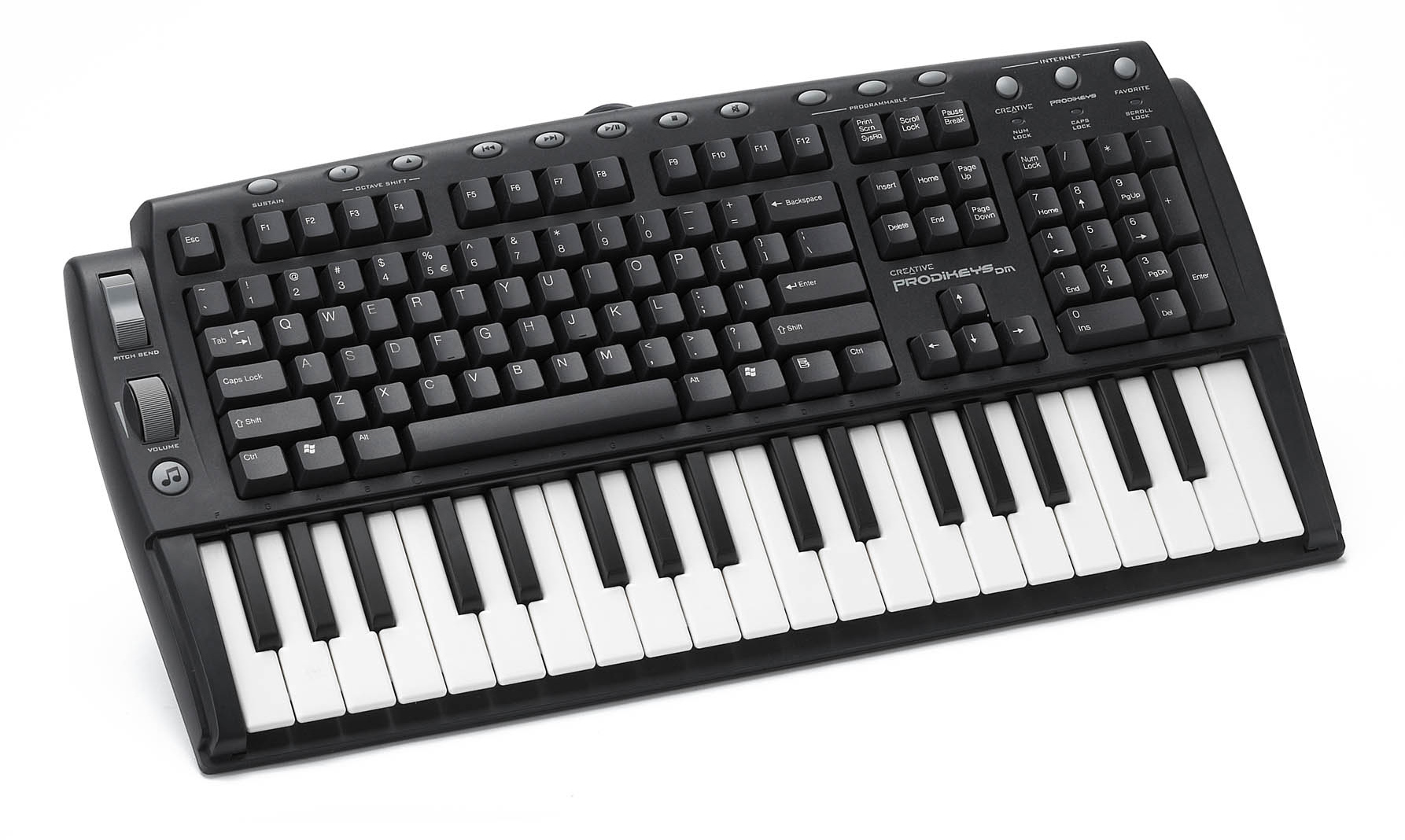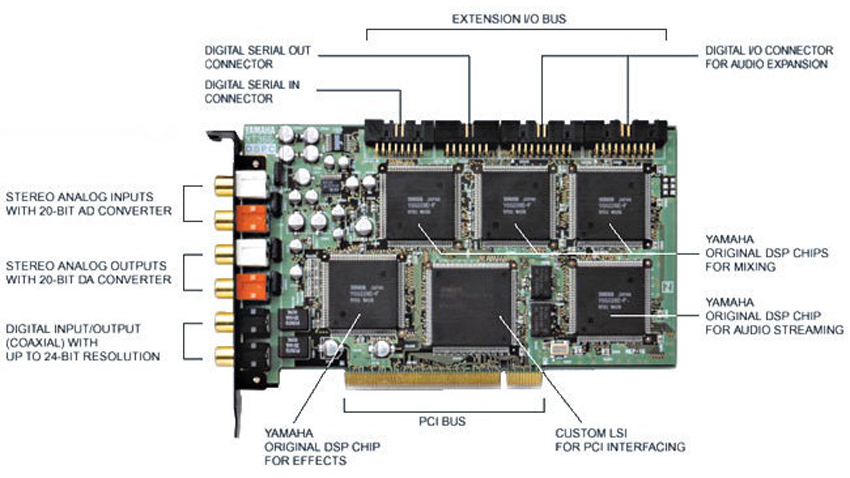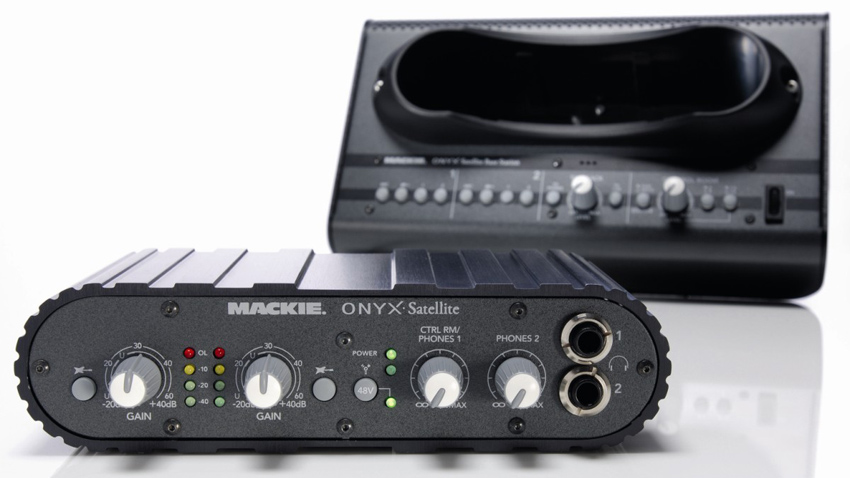
Take a look around your studio. If you're anything like us, there are likely one or two bits of gear you picked up in years past that are doing little more than gathering dust.
Think back to when they were initially announced, though, and you may recall breathless anticipation and excitement. Technological breakthroughs that seemed as if they would shake up the industry - or, at the very least, carve their names and model numbers into the music tech history books.
The sad truth is that many great ideas go unnoticed. Some of them only appeared to be groundbreaking products, ultimately failing to meet their user's expectations and fulfil the lofty promises of their marketing team. Others were unquestionably great, but appealed only to a niche market and consequently flopped. Many were simply ahead of their time, ending up languishing on clearance shelves while cheaper, more accessible spins on the same theme sold in their thousands.
We think some of these products deserve a piece of the attention that they never received, so we're throwing a party for the forgotten few, gathering together some of the coolest and most innovative products that sadly never made a splash.
1. Oberheim Prommer
Let's step back in time to the days when sample-based drum machines were taking the airwaves by storm. These ancient machines are revered today for their gritty, grainy low-bit samples, but at the turn of the 1980s, they were seen as far more realistic options than the sputter and hiss of beatboxes like the Roland CR-78.
Some models, like the Oberheim DMX/DX and the Sequential Circuits' Drumtraks, allowed users to replace the internal sounds by swapping out internal EPROM chips for new ones with new samples stored on them.
Though some custom chips could be bought from the manufacturers and third parties, Oberheim attempted to bring the job home with the Prommer. Released in 1984, the Prommer could act as a simple MIDI-controlled 8-bit sampler, the contents of which could be burned into an EPROM chip slotted into the top panel. That EPROM could then be transferred to a compatible machine of choice.
It was a cool idea and the Prommer itself was a thoroughly professional unit. Unfortunately, though, it was released a little too late in the game. Thanks to companies like Akai and Ensoniq, affordable samplers were just around the corner, bringing to the masses the ability to sample and store any sound on inexpensive floppy disks.
2. PPG HDU
A perennial innovator, PPG mainman Wolfgang Palm was always ahead of the game. In the case of his HDU, he was, alas, a full decade too early. You see, the HDU was a portable hard disk recorder.
Released in 1986, it offered twelve minutes of 16-bit, 44.1 kHz recording and playback, with such modern niceties as independent pitch and time manipulation, sample editing, overdubbing and mixing. Built-in effects included echo, delay, harmonisation, flanging, phasing, crossfading and filtering. In other words, many of the things that we now take for granted. The only catch? The $16,200 price tag. Still, this was not out-of-bounds for professional studios at the time.
Alas, digital tape would briefly sidetrack the industry before others re-examined the possibilities of recording to disk to great success. It wouldn't be the last time Mr Palm beat the industry to the punch.
3. Roland VariOS
This brightly adorned red devil was woefully misunderstood in its day and, sadly, due to its dependency on computer compatibility, is never likely to get the respect it deserves.
Released back in 2003, the VariOS initially offered a production environment (called V-Producer) based on the sample manipulation technology introduced in Roland's VP-9000 VariPhrase Processor. Using a familiar grid-based software interface, users could arrange multiple audio clips and perform feats such as tempo-matching and independent time, pitch, and formant manipulation. It could be synced to an external sequencer matched to its own time.
Yet the coolest thing about the VariOS was the thing that its very name suggested: its operating system could be replaced, thus transforming it into an entirely new device. Roland made good on the promise for a while, providing users with the VariOS 8 (a virtual analogue polysynth loosely based on the Jupiter 8) and the VariOS 303 (do we need to spell it out?). Later, Expansion cards allowed users to fire up a D-50 clone or a cool vocal processor with vocoding.
4. Yamaha DSP Factory

By 1998, computer recording was on its way to becoming the norm for home recordists. Yet the computers of the day were limited. Slow CPUs, anemic storage, and paltry RAM allotments meant that a finite number of tracks and plugins could be used.
For this reason, Yamaha sought to take the burden of mixing, recording, and effects processing off of the computer and place it on dedicated DSP chips. Enter the DSP Factory. This price-pulverizing powerhouse offered what amounted to the equivalent of Yamaha's boffo O2R digital console on a single (if lengthy) PCI card that could be slotted into virtually any Windows or Mac tower.
The DSP factory offered 24 channels of mixing with 16 channels of playback from your computer's hard drive for the relatively paltry sum of £599. And if you really wanted to splash out, you could slide the spiffy AX44 I/O expansion units into your computer's 5.25 drive bays.
It was quite the system at the time, but increases in native computing power and a reliance on compatible third-party DAWs ensured that its days were numbered.
5. Oberheim DPX-1
Ask any user of a modern software sampler if they can record directly into their instrument and you'll likely be met with a quizzical stare. The most popular currently available “samplers” don't sample at all, they merely play back samples created by other means. More often than not, they exist only as a means to trigger commercial sample collections.
In 1987, samplers were far more interactive, with the most famous units offering advanced sample recording and editing. Sample libraries were just beginning to sprout up, but there was no common sample format. An Ensoniq EPS sampler couldn't, for instance, load sounds created for a Casio FZ-1.
Oberheim's DPX-1 was more like a modern sampler in that it, too, lacked sampling (or even editing), and was intended as a means by which samples created on a wide range of samplers could be loaded in from the built-in floppy drive. A keen idea, but released to much headscratching. Musicians simply couldn't see the value in a playback-only sampler. Imagine that!
6. Creative Prodikeys
Nothing says 'computer musician' like... a QWERTY keyboard kludged onto the top of a MIDI keyboard!
Apparently, at the turn of the Millennium, the gurus at Creative thought this would make the ideal companion to their SoundBlaster line of soundcards. The trouble was that the MIDI keyboard didn't retract, so it was necessary to reach over the top of it to use the QWERTY keys. Not terribly ergonomic. Add to that the fact that some versions were not the sharpest-looking tools in the chest - and the less said about the miniature piano keys the better.
Needless to say, it didn't take the world by storm and was never supported beyond Windows XP, so if you have one, it is doubtlessly shoved under a bed or in the back of a closet. The demo video, though, has passed into legend…
7. Akai DR4D hard disk recorder
Seven years after PPG's hard disk recorder had failed to make a mark, Akai unveiled the DR4D. Like the PPG before it, this one took on the appearance of a high-end rack-mountable studio device.
A four track recorder, the DR4D was not to be confused with an all-in-one Portastudio. This was a multitrack recording device, pure and simple - mixer not included. It was also as pro as you could ask for, with such features as variable pitch, MIDI and SMPTE sync options, a jog/shuttle wheel, track merge and AES/EBU XLR I/O.
The price was competitive for the day, coming home for around $2k. Unfortunately for Akai, though, Alesis had released the 8-track ADAT only a year previously, a machine that was quickly on its way to dominating the project studio market.
8. Oberheim Strummer
Oberheim sure had a lot of good ideas! And a surprising number of them failed to excite the public, no matter how clever their designs.
Another case in point: the Strummer. One of Oberheim's Perf/x trio of hardware MIDI effects devices, the Strummer fitted into the path between MIDI keyboard and sequencer and had the capability to instantly transform any chord played on the keys into a realistic guitar strum.
The chords were re-voiced as they would be played on guitar, and a strum effect was achieved by monkeying with the timing between notes. You could adjust the speed of the strum effect, and even determine whether it should sound as if the guitar were strummed in an upward or downward direction.
9. Technos Acxel
Holy moly, did this thing ever look the business! Like a Hasbro Lite-Brite souped up by the aliens from Close Encounters of the Third Kind, the Axcel was pretty much all display, with a massive grid of 2,114 LEDs covered by touch sensors. Modern musicians use touchscreens every day, but in 1987, this was positively far flung.
All of this technology acted as the front end for an equally cutting-edge additive re-synthesizer. Sounds sampled into the Acxel were subject to FFT analysis and reconstituted as a collection of up to 1,024 partials. Waveforms could be created from whole scratch, too, simply by drawing with a finger on the display. Astonishing!
10. Yamaha MD4
When Tascam unleashed the Portastudio 144 way back in 1979, it kickstarted a home recording revolution. The combination of inexpensive media (common cassettes) and built-in mixer put multitrack recording into the hands of many a bedroom producer.
17 years later, Yamaha would reinvent the form with the MD4 digital multitracker. Using MD data discs (a close relative of the of the briefly popular MiniDisc), the MD4 could record and play back four tracks of compressed digital audio. Yes, compressed. However, the quality was still miles beyond that available from the then-ubiquitous 4-track cassette recorder.
The MD4 was followed quite quickly by similar decks from Sony and Tascam, but the medium was doomed from the start thanks to the rise of hard disk recording.
11. Mattel Optigan
The Optigan almost didn't make the list by virtue of the fact that it, and its spinoff, the Opsonar, were actually pretty successful in the early 1970s. However, once its day was done, the Optigan seemed to be instantly and utterly forgotten until its sound was revived in the form of samples some 25 years on.
Fitting, since the Optigan itself represented an early form of sample-playback, even if the technique for playing back those samples was an uncommon one (to say the least). You see, the Optigan's sounds were recorded onto 12-inch optical discs, similar to the way soundtracks were recorded onto film strips. A light bulb was shone onto one side of the disc, while photodiodes were aligned on the other. The optical image on the disc (usually notes and chords) was converted into an audio signal that could be triggered by the instrument's organ-style keyboard.
It was a thoroughly consumer-quality product, though an attempt to create a pro version would arise in the form of the Vako Orchestron.
12. Gizmotron
Also known as The Gizmo, the Gizmotron was a bizarre electromechanical guitar effect invented by 10cc musos Kevin Godley and Lol Creme. This strange box could be affixed to the bridge of a guitar (there was a bass version, too), after which six brightly-coloured keys could be depressed, each lowering a spinning, motorised wheel onto the strings. This resulted in a sustained sound not unlike that produced by a synthesizer.
Unfortunately, the Gizmotron suffered from poor quality control so few of the originals are likely to be found in good working order today. Surprisingly, however, a brand new Gizmotron is now available.
13. PPG Realizer
Another entry from Wolfgang Palm, this one even more forward-thinking than PPG's hard disk recorder. It was called the Realizer and it is the rarest of PPG products - only two units and a prototype were built.
Released in 1986, the Realizer was a digital music system consisting of a futuristic console with a sizable display. The idea was to combine sound production, virtual synthesizer emulation, recording, sequencing, mixing and processing into one device.
It's that virtual synthesizer bit that we find most intriguing. It allowed the user to load in models of FM, wavetable, sampling, and analogue synthesizers. Promotional material of the day clearly displayed a virtual Minimoog on the screen, a full fourteen years before Steinberg's Model-E.
14. Akai Synthstation 49
Synths for the iPad hit the App Store almost immediately upon the release of Apple's first generation tablet. Even big name manufacturers like Korg were quick to pump out iOS versions of some of their catalogue.
Akai joined in as well, bringing out a music production app called Synthstation. The app itself was serviceable, but it really came to life when the iPad on which it was installed was slotted into the front panel of the Synthstation 49. This four-octave MIDI controller provided a familiar hardware interface of knobs, buttons, drum pads, and keys that had hooks directly into the software.
The initial plan was that other app developers would offer compatibility with the Synthstation - Blip Interactive's Nanostudio being a notable example. However, the Synthstation was hobbled by two factors.
First, the keyboard itself was nothing short of woeful. Cheap, with a poor action and terrible velocity response, it really isn't much better than a simple triggering device. Secondly, it only worked with the docking connector on the original iPad and its successor, the iPad 2. However, it was a terrific idea and we're still hoping to see similar product built to a more professional standard.
15. Mackie Onyx Satellite
Mackie's two-part Satellite interface was an attempt to bring together a stationary desktop recording interface and a smaller, portable device suitable for taking on the road with your laptop.
The latter was called the Pod, and offered up a pair of preamps on Neutrik combo inputs, a pair of control room outputs, headphone jacks and meters. A FireWire connector was provided around the back for connecting to a computer. When more was needed, the Pod could be plugged into the Base, a larger, desktop unit that upped the I/O and even added a talkback mic.
It was a slick combination, even if it did lack important features like MIDI I/O. We're still waiting for a follow up!








